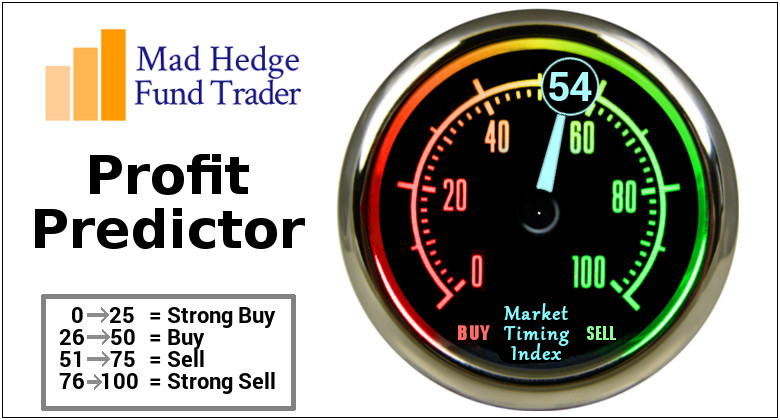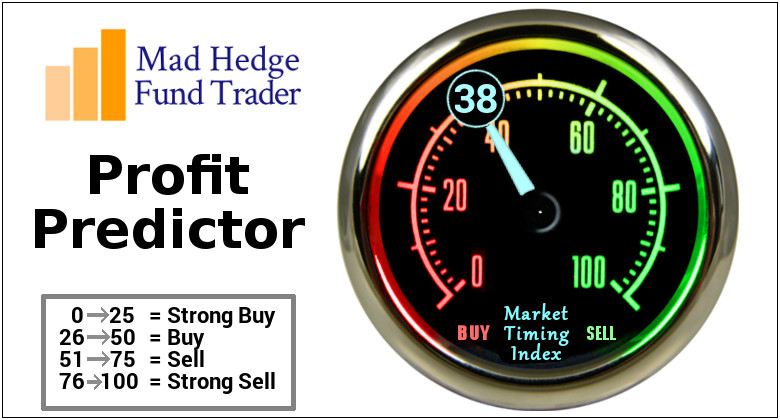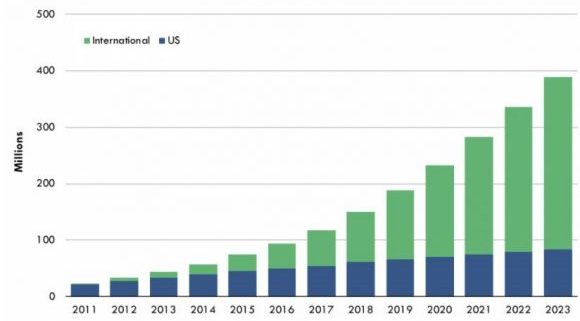As the trade ruckus rumbles on for the foreseeable future, there are some places to deploy cash and some places to avoid like the zika virus.
The one area of tech to avoid that is clearer than daylight is the small cap chips companies.
Like a fish out of water, you should not feel comfortable holding shares in this type of equity amid the backdrop of an unresolved trade skirmish.
Although the Mandarins ironically need our chips, the uncertainty permeating around small chip firms means it's not time to hold let alone initiate new positions.
Investors still don't know how this standoff with shake out.
Until, there is more clarity going forward, give way to the next guy who can take the heavy loss.
Keep the powder dry for better times.
The long-term demand picture is healthy with IoT, cloud, and software companies never being thirstier for chips.
Short term is a different story with many of these smaller chip companies subscribing to grotesque charts that will make your jaw drop.
Take Skyworks Solutions, Inc. (SWKS) whose shares have spent the majority of 2018 trending lower and are stuck in purgatory.
(SWKS) produces semiconductors deployed in radio frequency (RF) and mobile systems.
This stock has been tainted by the horrid reality that it generates 25% to 30% of revenue from China.
If you have been living in a cave for the past eight months, technology is the battleground for global supremacy pitting two of the leading technological heavyweights in the world against each other in a fiercely contested, drawn-out conflict.
Any American listed chip company doing at least 20% of revenue in China has the same chart trajectory and that is not up.
Adding insult to injury, (SWKS) generates 35% to 40% of its total revenue from Apple.
As we approach every earnings season, the story rewinds and plays again to loud applause.
A slew of analysts appears on air condemning Apple promulgating lower iPhone sales due to surveys taken across various key suppliers giving them a snapshot into production numbers.
Each time, the analysts are proved wrong. However, the avalanche of downgrades that ensues knocks the stuffing out of the small chip companies dipping viciously, at times more than 10% or more on the headline.
One of the larger Chinese contracts that was signed by (SWKS) was with ZTE. Yes, that ZTE, the one the U.S. administration temporarily put out of business for selling telecommunication equipment to North Korea and Iran.
That was the nail in the coffin.
According to the (SKWS) official website, it has an ongoing, expanding relationship with ZTE and its chips would be "powering data cards and USB modems" in ZTE-manufactured next-generation tablets.
Luckily, the American government reversed its initial decision restoring operations to ZTE.
That does not mean it is out of the woods yet as lingering risks still overhang over this company.
This revelation underscores the massive contract risk for companies that unlike behemoths such as Micron, are desperately reliant on just a handful of contracts to propagate short-term revenue.
Effectively, the U.S. administration views American chip companies as collateral damage to the bigger picture.
The only reason the ZTE ban was lifted was because it was a prerequisite to restart talks between both sides.
If the ban was upheld, 75,000 Chinese workers would have needed to polish the dust off their resumes to start a fresh job search.
The inability to sell components to service the Chinese consumer will strike where it hurts most: the bottom line.
Chip producers did $1.5 billion in sales with ZTE in 2017. That business is in a precarious situation when a tweet can just wipe out those contracts in one fell swoop.
Acacia Communications, Inc. (ACIA) churns out high-speed coherent interconnect products.
The stock was beaten down then beaten some more in 2018.
(ACIA) revealed 30% of its $385.2 million revenue derived from one contract with guess who...ZTE.
On word of ZTE ban, (ACIA) plummeted from $40 to $27.50 in one trading day.
The disappearance of a contract this vital to survival is tough for a small business to handle even if temporary.
Layoffs and a squeezed financial situation apply unrelenting pressure on management to find an elixir.
Cirrus Logic Inc. (CRUS) pumping out a mix of analog, mixed-signal, and audio DSP integrated circuits (ICs) was trading more than $62 just a year ago.
Fast forward to today and its shares are at a measly $39.
To say Cirrus Logic's eggs are in one basket is an understatement.
(CRUS) procures 80% of revenue from Apple.
It's all hunky-dory to develop a close relationship with Apple, but in light of this unpredictable economic climate, shares have been hit hard and there is no end in sight.
(CRUS) even won a contract to help produce Apple's noise canceling and water-resistant AirPods, but that does not do anything to change the narrative.
The vultures are circling around this name and it was time to abort a long time ago.
Xilinx, Inc. (XLNX) is another small chip company and the first to create the first fabless manufacturing model headquartered in San Jose, California.
This company, founded in 1984, procures around 35% of revenue from China
The trade headwinds have set this stock in the crosshairs, being the victim of frequent 5% drops and two 10% slides in 2018.
It is a miracle this stock is slightly in the green this year, and (XLNX) is one of the lucky ones.
Skim through the rest of small cap chips stocks and the charts look the same. Dreadful with massive rally busting sell-offs.
The extreme volatility in and of itself is a sensible reason to steer clear of these names.
The headline risks that splash across the morning news spreads are a daily reminder that chip stocks, big and small, aren't out of the woods yet.
The Johnny-come-latelies must expose themselves to higher quality, unique assets which possess little or no China exposure.
For the experts, trade the volatility at your peril. But if volatility is what you want with scarcity of value, leg into Roku (ROKU) or Square (SQ) on moderate sell-off days.
________________________________________________________________________________________________
Quote of the Day
"Technological progress is like an ax in the hands of a pathological criminal," said German-born theoretical physicist Albert Einstein.




















